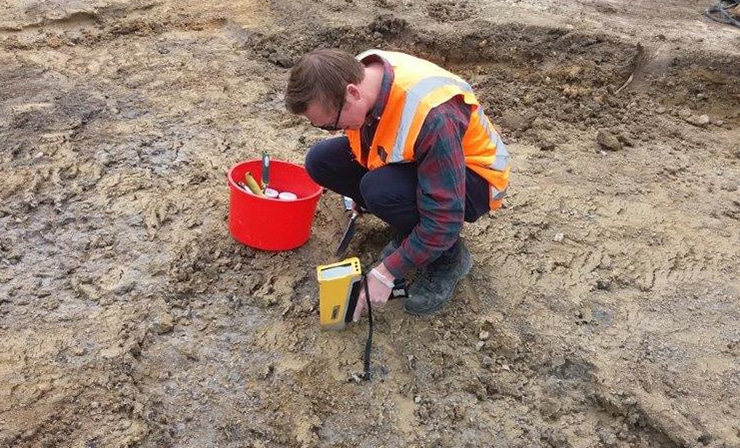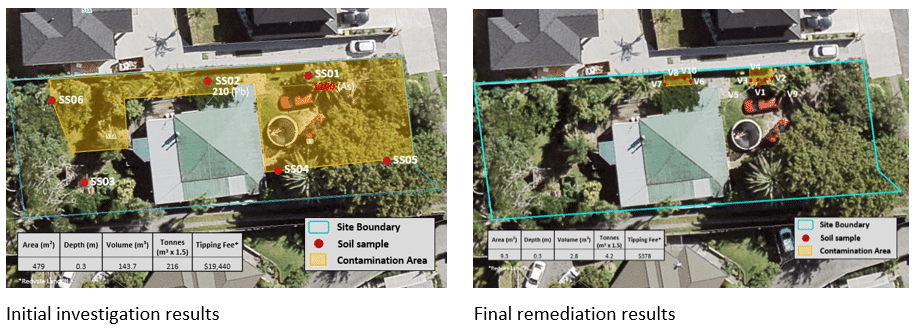Written by Greg Beck | Land Contamination Principal | Cato Bolam Consultants
Choosing the right strategy can have a significant impact on a project’s cost and time frame.
If you want to subdivide your property or change the land use you probably already know that a contaminated land investigation may be required to get consent. What you might not know is that there are different investigation strategies that can be employed and the one that you choose can have a significant impact on the cost of consenting and the time frame for completion of your project.
The most basic decision is between a preliminary site investigation (PSI) and a detailed site investigation (DSI). Although PSIs and DSIs are similar in some ways, the choice to do one or the other could make the difference between your subdivision being a permitted or a controlled activity.

Under the Resource Management (National Environmental Standard for Assessing and Managing Contaminants in Soil to Protect Human Health) Regulations 2011, commonly referred to as the NES, performance of a DSI, which must include sampling, pre-determines that your activity will be controlled if the sampling indicates any contamination present above background levels, even if it poses no risk to human health or the environment. On the other hand, if you perform a PSI, which may include soil sampling, and find those same soil concentrations, your activity will qualify as permitted and will not require a resource consent. Performance of a PSI may, under certain circumstances, permit subdivision even if contamination levels are above human health or environmental guidelines.
At Cato Bolam we recognize that getting your proposed subdivision permitted rather than controlled will save you both money and time. Because of the similarities between a PSI with sampling and a DSI, we can initially perform sampling under a PSI but transition to a DSI instead if the sample results indicate that the proposed activity does not qualify as permitted. This approach is designed to provide you with the most appropriate type of report for your situation at the lowest cost. Nobody wants to pay for a PSI that then just recommends that you do a DSI.
The second variable in contaminated land investigations concerns the scope of the sampling that is performed. Because more samples equate to more laboratory analyses and, therefore, higher costs, some consultants base their investigation on a minimum number of samples for analysis. The drawback of this approach is that reliance on a small number of samples can result in a large area of the site being labelled as contaminated based on a single sample result. Overestimating the area of contamination can result in significantly higher volumes of soil requiring either on-site management or off-site disposal.
The costs of assessing a site can easily be exceeded by the costs of remediation. Cato Bolam believe that modest upfront expenditures for a credible assessment can lead to significantly lower remediation costs down the road.
As an example, we recently inherited a job where another consultant had performed a DSI with minimal sampling across a nearly 1,100 square metre (m2) property where subdivision was proposed. Results showed that two samples were contaminated. Because only six samples were collected across the property, the area identified as contaminated was very large. A second survey of the property using an x-ray fluorescence spectrometer (XRF) reduced the estimated area and volume of the contamination significantly. The eventual remediation performed by Cato Bolam removed even less soil, with the final contaminated soil volume reduced by 98 percent from what was initially estimated.

The decisions made during this contamination investigation and subsequent remediation had significant cost consequences. Estimated disposal and remediation costs based on the original DSI include:
Area of contaminated soil: 479 m2
Volume of contaminated soil: 143.7 m3
Estimated soil disposal tipping fees: $19,440
Estimated total remediation and disposal costs: $35,554
Estimated actual disposal and remediation costs, including the additional XRF survey include:
Area of contaminated soil: 9.3 m2
Volume of contaminated soil: 2.8 m3
Additional XRF site survey: $1,200
Estimated soil disposal tipping fees: $378
Estimated total remediation and disposal costs: $1,006
Total Cost: $2,206
This example demonstrates the potential advantages of performing an initial competent investigation that provides the information necessary to make intelligent, well informed decisions regarding the need for remediation on a property. A bargain priced contaminated land investigation may seem tempting but the potential resultant downstream remediation costs argue against it.
The final decision concerns what to do about any contamination that is found during the investigation. The most common choice is between physically removing the contamination from the site or managing it on-site through isolation or a site management plan. Small quantities of contaminated soil are typically excavated and removed from the site because it is generally relatively cheap and has the advantage of clearing contamination from the site. For larger volumes of contaminated soil, it can sometimes make economic sense to leave the soil in place and either cap it or isolate it in a bundled area and manage it under a soil management plan if there is sufficient space on the site. The major disadvantages of this approach are that contamination remains on the site with that fact noted on the Land Information Memorandum or formalised in a property covenant and there will likely be ongoing maintenance and management responsibilities.
The Cato Bolam land contamination team provide land contamination services including initial assessment, remedial action plans, remedial oversight, site validation reports and ongoing site management plans.

